Check out my custom vibration dampener
Hybrid Tennis Strings
Definitive Guide & Best Combinations
We hope you love this article. Just so you know, TennisCompanion may collect a small share of sales from the links on this page to help keep this site running. Learn more.
When you have your racquet strung, you can choose to use the same string for the vertical mains and the horizontal crosses, or you can opt to combine two different kinds, referred to as hybrid stringing.
Although relatively common, I consider it an underrated method of stringing, which stands to benefit a wide range of players looking to get the best possible performance out of their racquet.
In this guide, I explore the topic of hybrid stringing from all angles to provide players with a blueprint for thoroughly understanding and getting the most out of this stringing method.
Below, I’ve included a selection of popular hybrids worth checking out if you’re in the market.
- Wilson Champion’s Choice Duo
- Babolat VS Touch + RPM Blast
- Wilson Duo Power
- Babolat RPM Power + Xcel
- Volkl Psycho
Click here to check out my full list of favorite hybrids.
Article Contents
Click below to jump to a section
Tap below to jump to a section
What is Hybrid Stringing?
Why Use Hybrid Stringing?
Hybrid Stringing Pros & Cons
Ideas for Hybrid Stringing
Hybrid Stringing & Tension
Restringing Hybrids
How to Choose a Hybrid
Hybrids the Pros Use
Best Hybrid Strings
New to TennisCompanion?
Create a free account and explore my latest videos below
What is Hybrid Stringing?
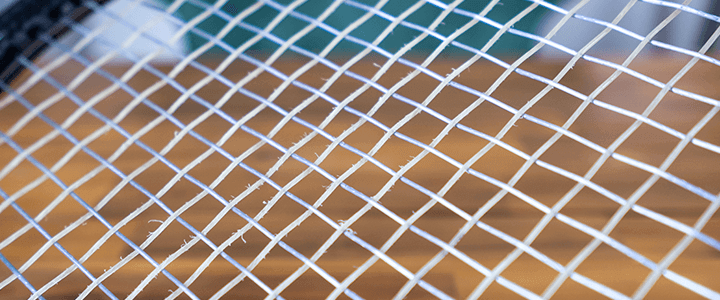
Hybrid stringing refers to a stringing method where two different strings are combined when stringing a racquet, one for the vertical mains and another for the horizontal crosses.
There are five commonly referenced types of tennis strings: natural gut, polyester, synthetic gut, multifilament, and kevlar, so it’s typical for players to mix and match these when stringing a hybrid.
However, a hybrid can also be as simple as combing the same string with different gauges or thickness. Another route might be to combine a textured or shaped version of a string with its smooth or cylindrical counterpart. Here are two examples:
- Luxilon ALU Power & Luxilon ALU Power Rough
- Wilson Revolve & Wilson Revolve Twist
As a result, there are virtually unlimited options to consider, which gives players greater flexibility in finding a string setup that meets their needs.
Pre-packaged vs. Separate
In some cases, you’ll find popular string combinations available for purchase as a single pack to string one racquet, as is the case with Wilson Champion’s Choice Duo, which combines the following:
- Wilson Natural Gut 1.30
- Luxilon ALU Power Rough 1.25
Although convenient because you don’t have to buy two separate packages, you’ll sometimes pay a premium. As such, I’d recommend you purchase individual sets, which combined you can use to string your racquet twice at a reduced cost.
Plus, pre-packaged hybrid strings don’t allow you to test out close variants of the same string, i.e., Luxilon ALU Power vs. Luxilon ALU Power Rough, nor do they allow you to mix and match different gauges.
As a result, I almost always recommend players buy individual or separate packs of the two strings they want to use as a hybrid. The only exception would be a player that doesn’t plan to string their racquet more than once with the same hybrid; perhaps they’re just trying it for fun.
Why Use Hybrid Tennis Strings?

Hybrid stringing enables players to strike an ideal balance between the unique characteristics offered by two different types of strings.
As you might expect, every string comes with its pros and cons, so combining them can help enhance or mitigate specific qualities in an effort to get the best of both worlds.
Here is a handful of qualities frequently associated with tennis strings:
- Power
- Spin
- Comfort
- Durability
- Feel/Touch
- String Movement
- Tension Maintenence
Once a player finds a string they enjoy, they might consider combining it with another string to enhance any of the above qualities. Let’s review a few specific scenarios that drive players to consider hybrid stringing.
Added Durability
One of the top reasons players consider moving to a hybrid string setup is for durability, and there are two options a player can take.
The first route you might consider taking if you love your string, but they break too quickly, is combing your current string with a lower gauge, i.e., a thicker version, of the same string, which you’d string in the mains.
Yes, you could string your entire racquet with the thicker alternative, but you can maintain a bit of extra feel, spin, and power with the hybrid.
Unfortunately, not all strings come in multiple gauges, so if you’re already using the lowest available, that’s not an option. In this scenario, you’d want to consider a different string that’s thicker or offers more robust materials and construction.
For example, if you use a multifilament like Wilson NXT, you might combine a thicker alternative of a similar string like Wilson Sensation 15 to improve durability. Alternatively, you might combine the same type of string with more durable materials, such as Wilson NXT Control. In both scenarios, you maintain the full multifilament setup while improving the overall durability.
If that’s not enough, you might opt for an entirely different type of string for a hybrid, such as a polyester like Wilson Revolve.
Keep in mind that if you opt for a significantly more durable string than the one you’re already using, then you might consider reducing the thickness of that string. Here’s an example:
Current setup: Wilson NXT 16
Hybrid setup: Wilson NXT 16 with Wilson Revolve 17
The higher gauge Wilson Revolve may be more than sufficient for the durability you desire, while also offering better feel and spin than the thicker version. Not necessary, but it’s an option.
Enhanced Comfort
Another common and growing reason for using a hybrid string setup is to improve comfort.
These days, polyester tennis strings are highly popular, and while they can offer excellent performance, they’re stiff and low powered, which can lead to injury over time. The use of polyester with a stiffer tennis racquet can further exacerbate the problem.
Players who encounter issues with polyester tennis strings might abandon them altogether, which in some cases is the right call. However, an alternative would be to combine the polyester they’re using with a softer string to improve comfort without entirely forgoing polyester.
Depending on the severity, players who find themselves in this situation might take a subtle and admittedly less common approach of combining a softer polyester with the ones they’re already using.
However, the typical path would be to combine polyester with natural gut or a multifilament to for a more substantial boost to comfort, while keeping in mind that the whichever string they place in the mains will dominate the overall feel.
Save Money
Another entirely sufficient reason for considering a hybrid string setup is to reduce the cost of stringing.
For example, a player that enjoys the comfort, feel, and power of Tecnifibre’s premium multifilament tennis string X-One Biphase, but struggles with the price tag, might consider combining with another less expensive option, such as Tecnifibre Multifeel.
Another route would be to combine an ultra-premium natural gut such as Babolat’s VS Touch with a premium, yet less expensive multifilament option like X-One Biphase.
Keep in mind that you’d want to string the higher-priced or more quality version in the mains in both scenarios since that selection will dominate the overall feel and hitting experience.
Transition Juniors to Polyester
First and foremost, parents need to consider their children’s health impact and longevity before making a switch. Polyester strings are stiff and can be harsh on a player’s arm, especially when combined with many modern and stiffer tennis racquets.
As a result, transitioning kids to polyester too soon can result in long term injury and complications that reduce their ability to perform and enjoy the sport, so it’s not a decision that parents should take lightly.
With that said, when your child reaches an age and skill level where the lower power, high spin potential, and durability of polys would be beneficial, it can be helpful to string hybrid to start.
For most, I’d recommend not even considering polyester string for strong intermediate to advanced juniors until they’re at least 16 years old. Still, it’s important not to rush and evaluate your child’s development.
There are alternative string options out there that should be more than sufficient up until this age. You may go a year or two stringing more frequently due to strings breaking, but you’ll be protecting your child’s health and longevity.
When ready, a hybrid string setup with a multifilament or natural gut combined with polyester can be an excellent starting point. Stringing the multi or gut in the mains will maintain maximum comfort, while the polyester will stiffen up the string bed to reduce power and allow the main string to slide more easily for added topspin.
You may choose, or your child may decide to move to a full poly setup once their 18 years old, but it may never be necessary. Many professional tennis players use a natural gut and poly setup their entire careers.
Hybrid Stringing Pros & Cons
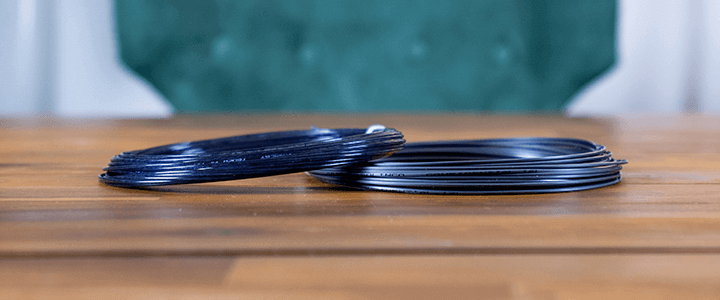
All strings have their advantages and disadvantages, and hybrid string setups are no different, but the true pros and cons vary based on the specific hybrid string setup in use.
Pros
Instead of relying on one single tennis string’s performance characteristics, players can combine two different options to balance each string’s preferred qualities.
Said another way, a player can use hybrid stringing to enhance certain desirable qualities they feel will improve their game.
In essence, hybrid stringing can serve as an excellent fine-tuning mechanism for helping players achieve their desired performance.
Cons
On the other hand, players who use hybrid stringing won’t maximize a specific string’s performance qualities.
For example, all things being equal, a player using a full polyester string will be able to generate more topspin with a full poly setup than poly and a multifilament or natural gut setup.
Likewise, a player using a full natural gut or multifilament setup will enjoy more comfort and power than a player who combines one of those with poly, so it’s all about give and take.
At this stage, it’s worth point out that some hybrid string setups will sacrifice more than others. To put that into perspective, if a player chose to combine a higher-end multifilament with a less expensive option, then the impact for the majority of players will be minimal when compared to a full bed of the high-end multi.
The same would be true if a player strings hybrid with different gauges of an identical string. Yes, there will be an impact on performance, but it would be minimal, so in effect, it can turn out to be a win-win scenario.
Ideas for Hybrid Stringing

There are virtually unlimited options for creating a custom hybrid string setup, but let’s look at some popular choices and why players might decide to use them.
Keep in mind that some of these hybrid combinations I cover aren’t incredibly popular. With that said, the goal is to get you thinking about different ways you might benefit.
Poly & Poly
One of the most basic hybrids would be to combine a thicker version of the same string for added durability. Although polyester tennis strings are well-known for their durability, they can still break.
If you’ve found a poly you enjoy, but you find yourself breaking the strings well before losing their resilience, then stringing the mains with a thicker version of the same poly or a more durable poly can be a great fix.
If you don’t change your tension, you’ll find the string bed is a bit stiffer, adding to control, and you might sense a touch less feel and spin, but it may be a worthy tradeoff to extend their life and save some money.
You also might consider stringing a softer poly with a stiffer version of the same gauge, or possibly a standard cylindrical version with one that has texture or shape to it.
Multifilament & Multifilament
Often, players that hit with multifilament tennis strings encounter issues with durability. Although excellent for comfort, they can break easily, especially when hitting with lots of topspin.
A straightforward fix is to string the mains with a thicker version of the same multifilament if available. If one isn’t available and you’re looking to stick with a full bed of multifilament, you might consider a more durable or control-oriented multi. Some multis offer more durable construction, coatings, or a combination of materials for added strength while maintaining excellent comfort.
Another reason you might consider a hybrid multifilament setup is to decrease the cost of your string job. If you’ve found a premium multifilament you enjoy, but can’t quite stomach the expense each time you need to restring, you can keep the expensive string in the mains and use a less expensive multifilament cross.
Natural Gut & Poly
The most popular hybrid string setup on the pro tour is natural gut and polyester. Until the 90s, natural gut was the gold standard for professional tennis players for the entire racquet.
However, throughout the 90s, polys became increasingly popular, allowing players two to swing harder and generate more topspin. The trend continued as players became stronger, and racquets became more powerful, and now poly is the most popular string on tour.
Despite that, natural gut and polyester hybrids are also prevalent. The combination offers exceptional playability, fantastic topspin, solid comfort, and mid-range power, which can work incredibly well.
Players that struggle with the comfort of a full poly string setup can find excellent performance and improved comfort by making this switch. However, this setup’s biggest downside is the natural gut’s cost, which is expensive for a high-quality set.
As always, the main strings will dominate the overall feel and performance of the racquet. Players looking for added comfort should string the natural gut in the mains, while those who desire more control would string the poly in the mains.
Multifilament & Poly
If you like the sound of a natural gut and polyester hybrid, but find it’s cost-prohibitive, then a multifilament and poly hybrid is an excellent option to consider.
The construction and performance characteristics of multifilaments are similar to natural gut at a fraction of the cost, making a terrific substitute and one of my favorite hybrids.
Usually, players will move to this hybrid from a full poly setup to improve comfort. However, it can also work incredibly well for players that appreciate the plush feel of multifilaments but desire a bit more durability, control, and topspin.
Multifilament & Synthetic Gut
Synthetic gut is the most inexpensive type of tennis string, offering good power and moderate all-around performance. As a result, it’s a popular default for beginners and recreational players.
Players who don’t want to spend much on their strings, but desire a little extra power, comfort, and feel are excellent candidates for a synthetic gut and multifilament hybrid. Usually, players that opt for this string setup would string the multifilament in the mains.
Synthetic Gut & Poly
Players who use synthetic gut, but are looking to reign in power for a bit extra control, while also improving topspin might consider this hybrid. All in all, players opting for this setup will find respectable comfort and improved topspin at an affordable cost.
Synthetic Gut & Kevlar
Although not nearly as popular as it once was, synthetic gut and Kevlar will provide players with exceptional durability and respectable spin.
These days, polyester is more common as part of a hybrid setup for durability. However, chronic string breakers still rely on Kevlar as a more durable option to avoid having to restring continually.
Due to its low power and ultra-stiff feel, you won’t find people stringing with a full bed of Kevlar as you do with polyester. Instead, it’s usually combined with a reasonably comfortable synthetic gut or multifilament.
Growing up, I used Gamma TNT2 Fusion Plus with Kevlar in the mains and synthetic gut in the crosses. Although I’d still end breaking the mains eventually, they lasted considerably longer than anything on the market, while also holding their tension well.
Hybrid Stringing & Tension
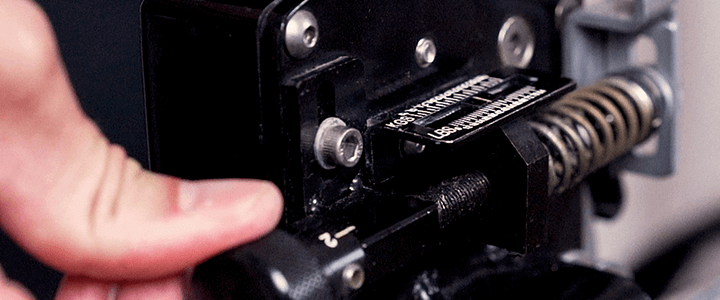
Like restringing, the implications of tension aren’t any different for a hybrid string setup vs. using one string, so it pays to be familiar with how tension impacts performance.
Although not necessary, many players opt to use a different tension for the mains and crosses. Under this scenario, players will typically select a tension for the mains and then drop the crosses by 2-3 lbs (0.9-1.4 kg), but no more than 5 lbs (2.3 kg).
The logic for doing so is that this approach gives the main strings a bit more freedom to move, thus aiding topspin. I encourage players to avoid going over 5 lbs (2.3 kg) when varying tension for two reasons.
First, you’ll likely end up with an erratic and less consistent stringbed. However, a variance too large will result in excess string movement and sawing of the main string, which will likely lead to premature breakage.
More often than not, you’ll find it recommended that you shouldn’t string the crosses tighter than the mains with a hybrid. However, this is one area where I don’t entirely agree, and my approach for varying tension is slightly different.
Usually, if I’m going to vary tension, I’ll select a tension for the more powerful string, and then if I choose to do so, I’ll drop the tension of the less powerful string regardless of whether, the more powerful string is in the mains or the crosses.
For example, if I’m stringing a poly in the mains and a multifilament in the crosses, I’ll set the multifilaments tension and then adjust the poly down. I do this because I want to reduce the multifilament’s power with higher tension while giving the poly more freedom to move, and I find I achieve better topspin this way vs. the other way around.
Ultimately, there are no rules, just helpful guidelines, so you have to experiment to find what works best.
Restringing Hybrids
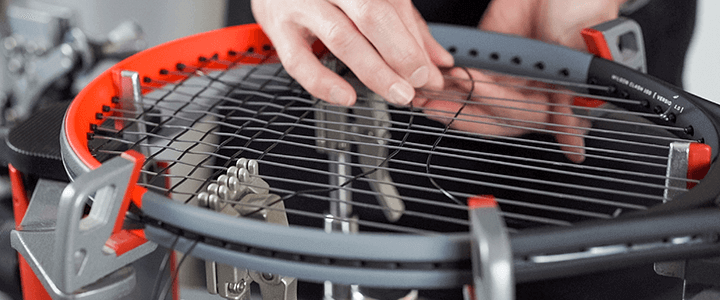
Without question, the general recommendations for restringing a tennis racquet apply to hybrids, but there are a few nuances you’ll encounter.
When combining two different strings, you may end up with varying degrees of tension maintenance, or the length of time they hold their tension. For an extreme example, natural gut strings maintain tension incredibly well, while polyester does not.
With that in mind, if the poly dies well before the natural gut, you may find yourself in a position where you need to cut out the expensive gut to maintain the overall performance of your string job. Unfortunately, replacing only one string isn’t an option as it can damage the frame.
Of course, if you’re using the same string and varying the gauge, then you’ll little to worry about as the difference in tension maintenance will be negligible. Either way, it’s good to keep the potential implications in mind.
How to Choose Hybrid Strings

With thousands of tennis strings on the market, it can be tricky to narrow down the best and find a combination that suits your game. If it’s your first time shopping for a set of tennis strings, I’d encourage you to check out my step-by-step guide for how to choose tennis strings.
For this section, I’ll assume you already have a string or hybrid setup that you’re already using to serve as a point of reference.
Step 1: Evaluate Current Setup
When selecting a hybrid string setup, it pays to take some time to reflect on what you like and dislike about your current strings. Here are some characteristics to help guide your thinking:
- Power
- Spin
- Comfort
- Durability
- Feel/Touch
- String Movement
- Tension Maintenence
- Cost
Would you like to enhance any of these or pull back on power or cost? Once you nail that down, you can seek out a string that delivers that feature you’d like to improve.
If you love your current strings and want to bump up durability, then check if there is a lower gauge of that string available and test it out in your mains – you should be all set. If there isn’t a thicker version available, move on to step #2.
Step 2: Determine Your Priority
If you look back at those same characteristics in the previous step, which feature is most important to you? You can only have one :)
Once you decide on that, move on to the next step.
Step 3: Select Your Main String
The string you choose for the mains will dominate the racquet’s overall feel and performance – it’s doing the heavy lifting, which is why players typically break mains.
Based on the priority you set in step 2, select a string that emphasizes that quality or performance characteristic. Here’s a quick ‘cheat sheet’ for reference.
| Type of String | Characteristics |
| Natural Gut | Power, Comfort, Feel, Tension Mantienence |
| Multifilament | Power, Comfort, Feel, Tension Mantienence |
| Polyester | Control, Spin, Durability |
| Synthetic Gut | Moderate All-Around Performance |
| Kevlar | Durability, Control |
Of course, there’s quite a bit of variety for each type of string, but these characteristics generally hold true.
Helpful Tip
Keep in mind that your new hybrid main may be a different gauge of the same type of string you’re already using. For example, if you love your multifilament setup and want more durability, but there isn’t a lower gauge in your current multi, you may need to find another thicker multi.
If you like the string you’re already using, and it meets your criteria selected in step #2, then it’s a great candidate for your main. I find this to be the case for many players.
Step 4: Select a Cross String
When selecting your cross string, you’ll want to refer back to step #1 and the feature(s) that you wanted to enhance and identify a string that meets that criteria. For example, if you are using poly and wish to improve comfort, then a multifilament in the crosses is an excellent option.
Alternatively, if you love your current multifilament strings, but you’re looking to add a bit more control, then a poly in the crosses could work well for you.
Step 5: Select a Tension
Once you’ve nailed down your main string and crosses, you’re ready to select a tension. I’ll make this one easy for you.
Usually, when changing strings, I recommend players avoid modifying tension at the same time to limit variables. By keeping the same tension, you’ll be in a better position to evaluate the new strings.
If you enjoy the new setup, but perhaps you’re looking for a bit more control or power, then you can use tension as a mechanism to refine the performance of your new strings.
Hybrids the Pros Use

Although I enjoy tracking and learning about the strings and tensions the pros are using, it’s important to keep in mind that just because someone on tour is using it doesn’t mean it’s ideal for you. Perhaps, just as important, the same strings won’t make you play like them.
With that in mind, here’s a selection of ATP and WTA players and the hybrid string setups they’re using. The string mentioned first is the mains, while the second string is the crosses.
ATP Players
| Player | Strings |
| Roger Federer | Wilson Gut + Luxilon ALU Power Rough |
| Novak Djokovic | Babolat VS Gut + Luxilon ALU Power Rough |
| Andy Murray | Luxilon ALU Power + Babolat VS Gut |
| Dominic Thiem | Babolat RPM Rough + Babolat VS Gut |
| Grigor Dimitrov | Wilson Gut + Luxilon 4G |
| Alexander Zverev | Babolat VS Gut + Head Hawk Touch |
| Marin Cilic | Babolat VS Gut + Luxilon ALU Power |
| Kei Nishikori | Luxilon 4G + Wilson Gut |
| Jo-Wilfried Tsonga | Babolat VS Gut + Babolat RPM Blast |
| Kevin Anderson | Babolat VS Gut + Luxilon ALU Power Rough |
WTA Players
| Player | Strings |
| Serena Williams | Wilson Gut + Luxilon 4G |
| Venus Williams | Wilson Gut + Luxilon 4G |
| Angelique Kerber | Babolat VS Gut + Yonex Poly Tour Fire |
| Sofia Kenin | Babolat RPM Blast + Babolat VS Gut |
| Joanna Konta | Babolat VS Gut + Babolat RPM Blast |
| Nicole Gibbs | Luxilon ALU Power + Wilson Gut |
| Caroline Wozniacki | Babolat Revenge + Babolat VS Gut |
| Jelena Jankovic | Luxilon ALU Power + Babolat VS Gut |
| Sabine Lisicki | Luxilon ALU Power + Wilson Gut |
| Dominika Cibulkova | Luxilon ALU Power + Babolat VS Gut |
I’ve done my best to get the mains and crosses correctly for each player, but I’ve seen some discrepancies in my research.
If you see any that are inaccurate or have another player you think I should add, let me know in the comments below.
Best Hybrid String Combinations

As we’ve covered, any two strings can make a hybrid, but some pair better than others and are combined more frequently.
Here’s a quick look at some of the most popular pre-packaged hybrid string combinations that are worth checking out.
For more string ideas, don’t forget to check out my guides on multifilament and polyester tennis strings, where I share some of my favorite picks for more great ideas.
Natural Gut & Poly
- Babolat VS Touch & RPM Blast
- Klip X-Plosive
- Volkl V-Fuse
- Wilson Champion’s Choice
Multifilament & Poly
- Babolat RPM Power + Xcel
- Head Velocity MLT + LYNX Tour
- Prince Warrior Touch
- Solinco Tour Bite + Vanquish
- Tecnifibre X-One Biphase + Ice Code
- Volkl Psycho
- Wilson Duo Power
- Wilson Duo Control
- Wilson Duo Feel
- Wilson NXT Duo II
- Wilson Spin Effect
Poly + Poly
- Head Gravity Hybrid
- Prince Vortex Triad
- Weiss Cannon Blue Rock + Power
Synthetic Gut & Kevlar
- Gamma TNT2 Fusion Plus
- Ashaway Crossfire
- Prince Pro Blend
Multifilament & Synthetic Gut
- Gamma Moto TNT2
Have a hybrid string setup that you enjoy? I’d love to hear what you’re using in the comment section below.
Wrapping Up
From intermediate level to the pro tour, hybrid tennis strings are an excellent option for players to explore when stringing their racquet.
Although there’s nothing wrong with using a single string, the combination of two different strings affords players greater variety while serving as an excellent fine-tuning mechanism.
Hopefully, this guide has helped you better understand this stringing method while providing inspiration for the types of hybrid string setups you might consider.
Of course, if you have any questions on the topic, I’d love to hear from you in the comments below.
Play Better Tennis
Improve your game alongside our community of tennis players
Why join?
Discussion Boards
Join the conversation with other members of the community.
5 Point Friday
Read our weekly recap of the 5 most interesting things we dig up in tennis.

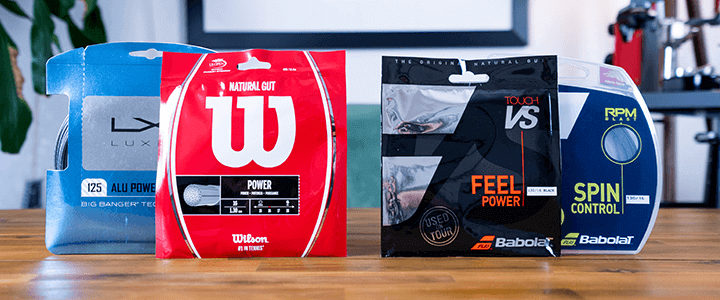

Leave a Reply
Want to join the discussion?Feel free to contribute!